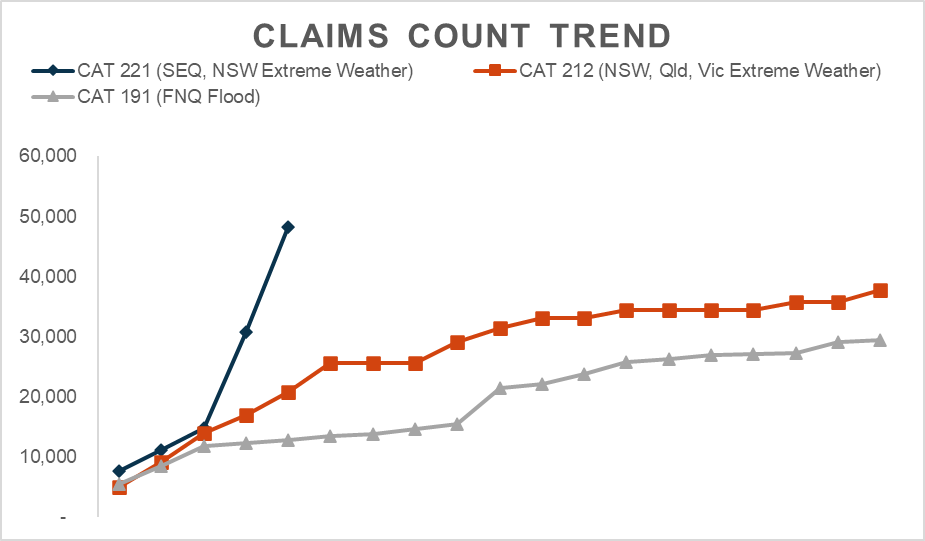Home Severe Weather Page 10
Frequently asked questions after a disaster
The Insurance Council of Australia is the representative body for General Insurers in Australia. While we’re unable to provide consumers with personal advice on products or insurers, we are on the ground following disasters to coordinate insurer response and respond to general enquiries related to the claims, clean-up and recovery process.
Only return to your property when emergency services give the go ahead. If water has entered the property, don’t turn on your electricity until it has been inspected by an electrician.
Contact your insurance company as soon as possible to lodge a claim and seek guidance on the claims process.
Contact your insurer immediately. If you have home or building insurance, your policy may provide emergency temporary accommodation.
Contact your insurer as soon as possible to lodge a claim and seek guidance on the claims process. Don’t worry if you can’t find your insurance papers, insurers have electronic records and need only your name and address.
If water has entered your property, don’t turn on your electricity until it has been inspected by an electrician. If you are without power, gas or NBN, check with your utilities supplier or networks on when you will be reconnected. You do not need to wait for your insurance assessor to visit your property before your utilities are reconnected.
You can start cleaning up but first take pictures or videos of damage to the property and possessions as evidence for your claim. If you have security footage of the event, make this available.
- Make a list of each item damaged and include a detailed description, such as brand, model and serial number if possible.
- Take photos before removing any water damaged or soaked items that may pose a health risk.
- Store damaged or destroyed items somewhere safe where they don’t pose a health risk.
- Do not throw away goods that could be salvaged or repaired.
- Speak to your insurer before authorising any building work, including emergency repairs.
An insurance assessor will inspect your property as quickly as possible once you’ve lodged a claim. That said, following large disasters, access to your property may be limited for days or even weeks. Your insurer will tell you when to expect your assessor.
Unfortunately, disasters can attract fraudsters looking to profit from others misfortune. If a builder or assessor unexpectedly arrives at your door offering services, you may ask to see some identification for your peace of mind. You may also contact your insurer to confirm the builder or assessor has been appointed to assist with your claim.
An excess is the amount you have agreed to pay towards each incident. The specific amount will be set out in your Certificate of Insurance. You may be required to pay more than one excess depending on the circumstances. If you are unsure, ask your insurer. A Disaster Declaration does not remove your obligation to pay your excess.
Speak to your insurer or broker if you’re not sure. Flood has a standard definition and for domestic products is offered in four ways:
- Standard inclusion
- Standard inclusion, opt out at customer request
- Not standard inclusion, opt in at customer request
- Not standard inclusion
Most domestic products are purchased direct from insurers. Customers should review their policy documentation or contact their insurer to confirm the cover they have in place.
For commercial products, flood cover is not standard and has to be opted into. Most commercial products are purchased via intermediaries i.e. brokers. Customers should review their policy documentation or contact their Broker to confirm the cover they have in place.
The covering of normally dry land by water that has escaped or been released from the normal confines of:
- any lake, or any river, creek or other natural watercourse, whether or not altered or modified; or
- any reservoir, canal, or dam.
If you opted out of flood cover, did not opt in to flood cover, or your policy excludes flood, your insurer may still assess any claim you make to determine how your home was inundated. This may be required to establish whether other inclusions in your policy (cover for storm water run-off for example) can cover all or part of your claim.
Check your policy wording and talk to your insurer if you do not understand what you are covered for.
Hydrology is the field of study and expertise that can determine how a home or property was inundated. Insurers will arrange a hydrology report in cases where they need to determine the primary cause of water inundation to make a claim decision.
A ‘Make Safe’ is immediate rectification works to prevent further damage to your property or make the site safe to visit. This may include fitting tarpaulins to your roof or treating debris with an adhesive to prevent the spread of contaminants.
A ‘Make Safe’ may initially be conducted by emergency services, government agency or a contractor appointed by your insurer.
A scope of works is a document that sets out what damage to your property is covered by your insurance policy. The scope of works is a list of home building repair works for your insurance claim. It can help identify and outline what repair or rebuilding work is needed to fix things. It may be used to obtain repair quotes.
Your scope of works is usually prepared by your insurer’s loss adjuster and/or builder or engineer. The scope of works may be developed by visiting or virtually assessing your property to inspect the damage and asking you for information.
If a house hasn’t been well maintained, it is at a much higher risk of being damaged by extreme weather. For this reason, when you apply for insurance, insurers require you to confirm your home is well maintained. If an insurer assesses your home and finds evidence it hasn’t been well maintained and that has contributed to the damage, they may reduce the amount they will pay you or require you to fix the maintenance issue before they repair your home. In some cases, the insurer may deny the claim.
The extent of damage, complexity of your claim and access to labour and supplies will impact how long a repair or rebuild will take. Once your Scope of Work is complete, ask your insurer for a timeline.
A cash settlement is an amount of money your insurer may offer to settle your claim. Insurers can settle some or all of your insurance claim using a cash settlement.
Insurers will explain the basis for the dollar amount of the cash settlement they offer you and provide you with a Cash Settlement Fact Sheet. You are free to get your own quotes to estimate how much it would cost to repair or rebuild your property and provide them to your insurer as part of the cash settlement process.
Common reasons for cash settlements include:
- it is unsafe to repair or rebuild your home.
- the local authority will not allow you to repair or rebuild.
- your insurer can only partially accept your claim. This may be because there is damage to your property that is not covered by your insurance, which first needs to be fixed by you.
- your insurance does not cover the amount of money it will take to repair or rebuild your home to today’s building standards and it is not possible for your insurer to repair or rebuild your home, having explored available options with you for you to pay the difference.





